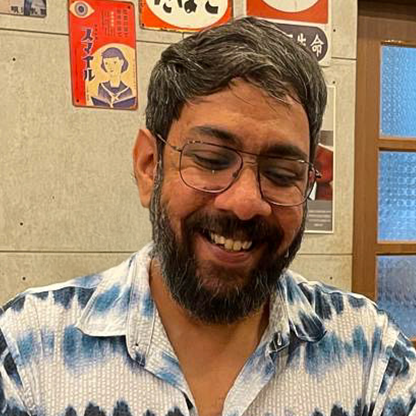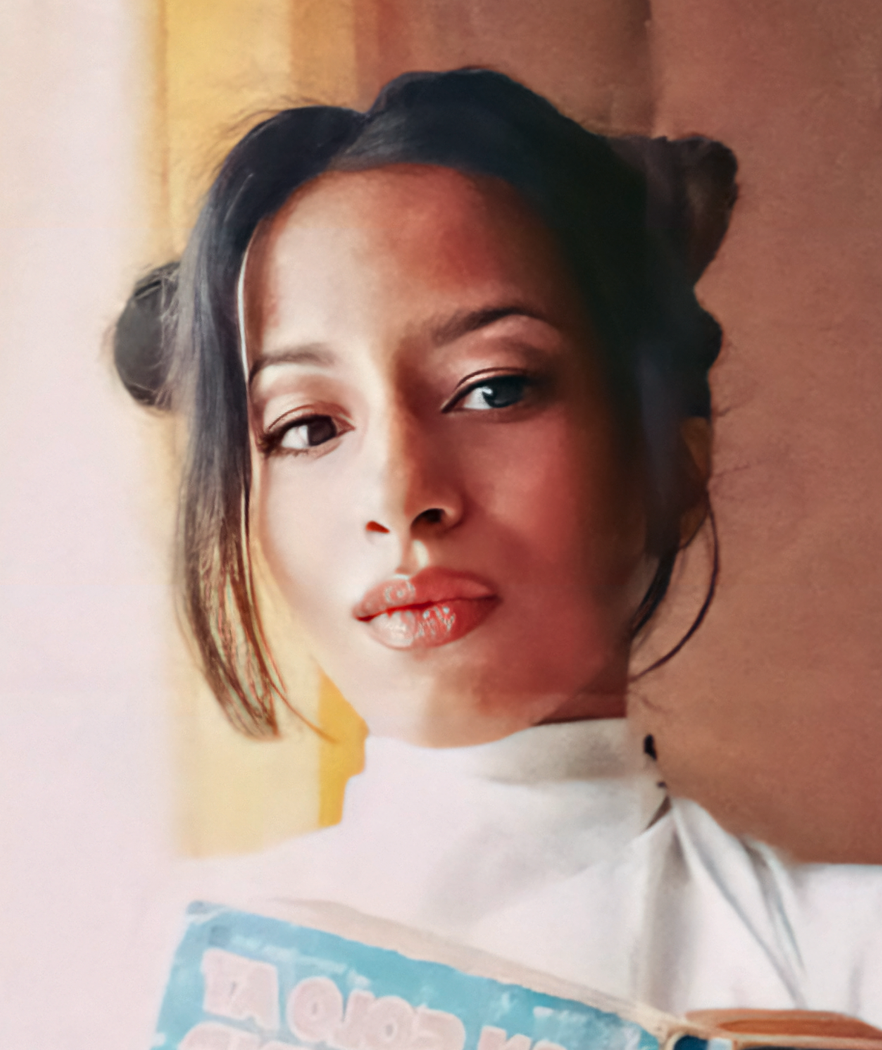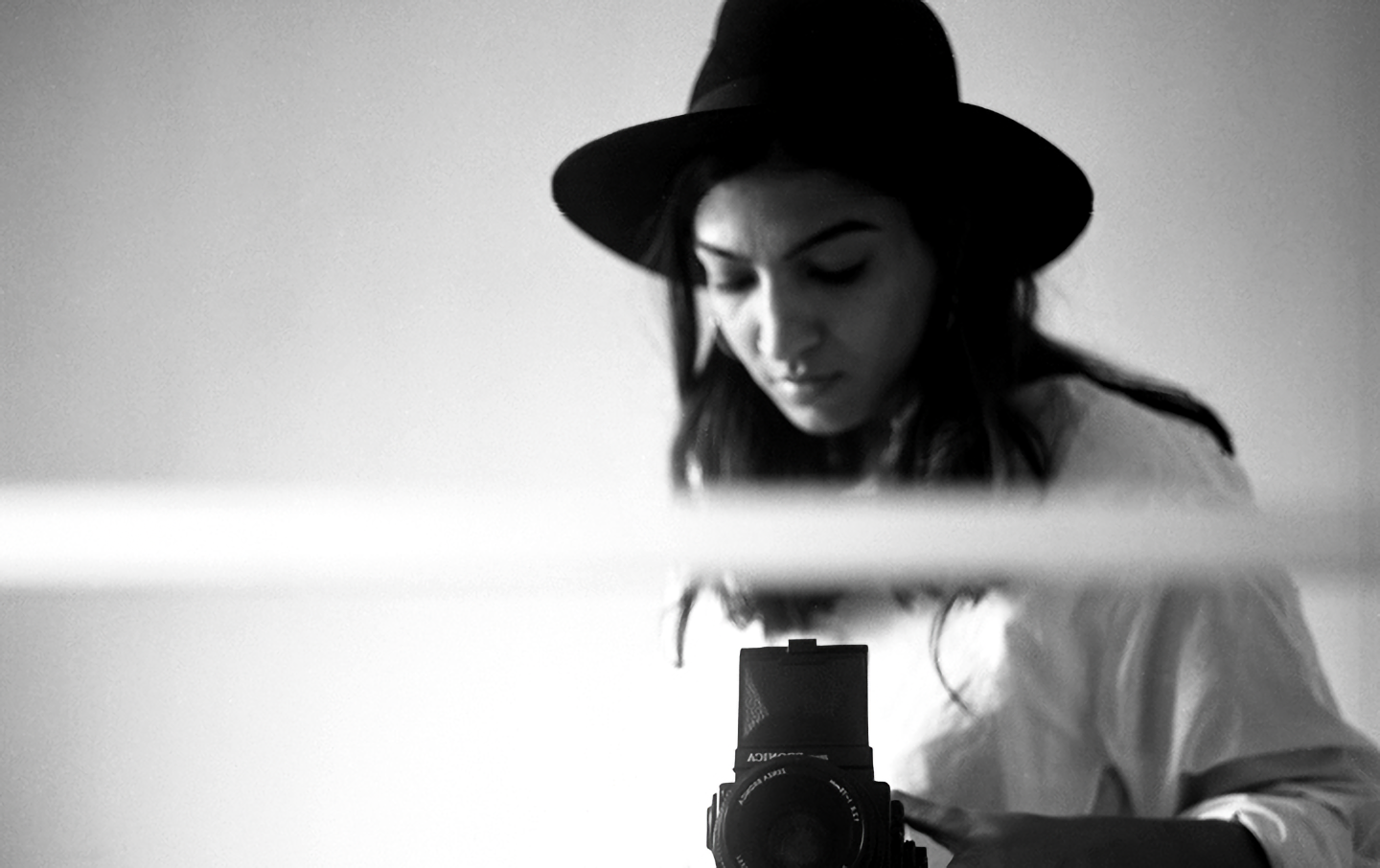"In my work, you may find an inordinate use of simplified hands and eyes as motifs," says Mira Malhotra, a graphic designer and visual artist from Mumbai. "My art is mostly flat and two-dimensional, so drawing an eye provides a focal point. It also creates a sense of depth and life, and a feeling of being looked at, which I like, in a creepy sort of way."
Mira runs her own independent design agency, Studio Kohl, and most enjoys working on projects that involve hand-drawn lettering, illustration, and music. The following are excerpts from a conversation with her about her approaches to design and illustration, setting boundaries, dealing with clients, and her vision for the future.
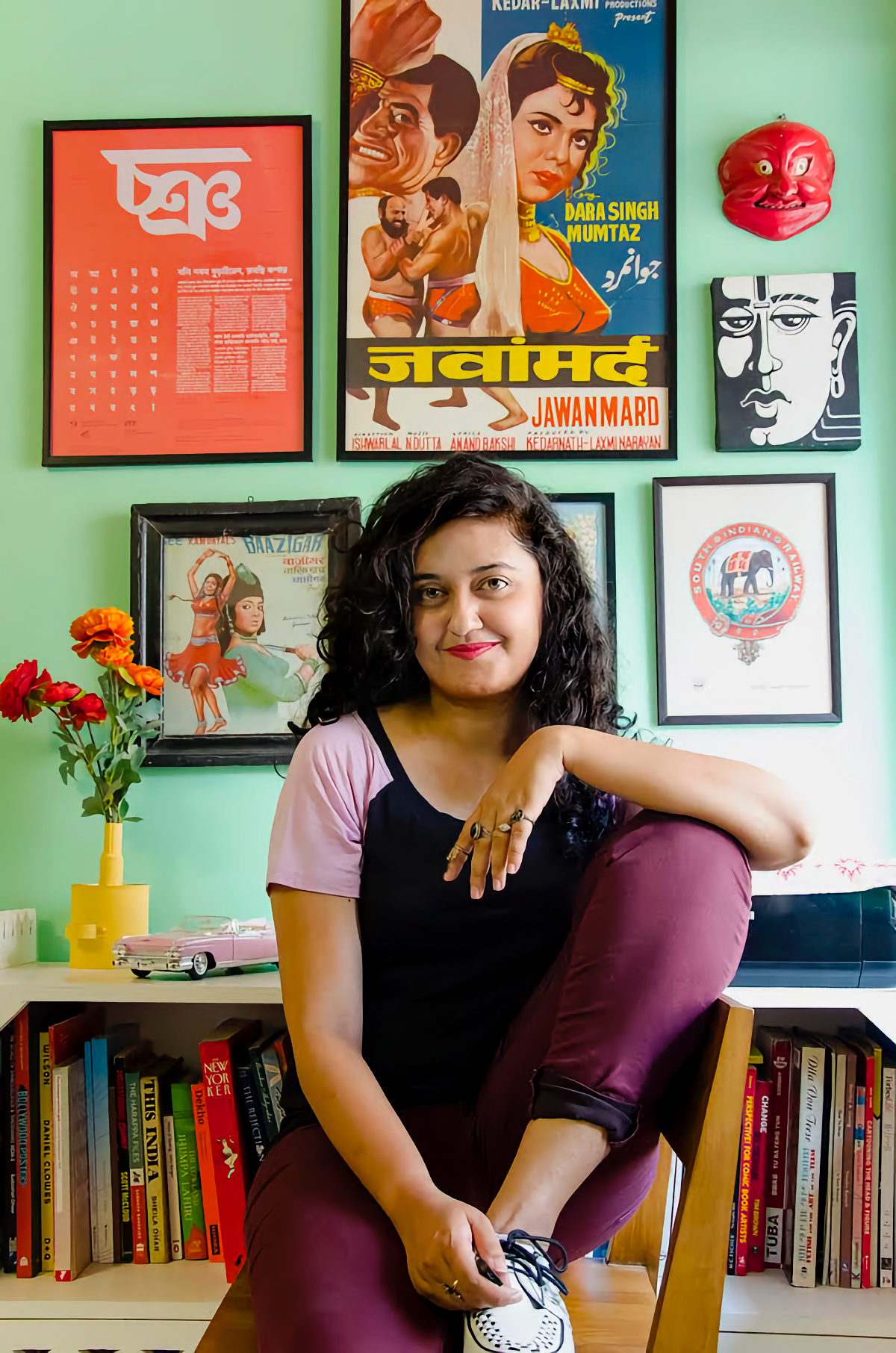
Talk to me about the early years of Mira Malhotra.
I'm a bit of a mixed breed, which probably explains why I'm generally confused. My dad is a Punjabi, who as a baby was moved with his family to Delhi during the partition. My mom is a Goan who grew up in Bombay. I am the third of four children and we shifted a couple of times when I was a kid. First Delhi, then out back in the desert in a place called Buraydah in Saudi Arabia, and then the capital, Riyadh. I grew up with all the trappings of American culture—sitcoms on Channel 2, shopping malls, supermarkets, KFC, and candy bars—but, of course, without the freedom and with the censorship (though that hardly matters to a kid). We moved to Bombay when I was 11, after witnessing the Gulf War. I guess you could say that during this time most of what had made an impact on me visually was the packaging of the products there: the bubble gum wrappers, the candy bars, everything. That is definitely something that is present in my work now as well. Going to the supermarket was a visual treat for me and I think I enjoyed it a little too much!
Since I'm a mutt, I never really had a culture I could identify with, or feel comfortable in, as I was exposed in little bits to many cultures. I've only realised what a great sense of belonging that gives you after I came to India, but I'm very happy I've had a chance to experiment with everything. It's fun trying to sort yourself out after the confusion.
Was your family supportive of your decision to pursue a career as a designer/ illustrator?
My family appreciates the arts. One of my sisters used to write, the other is a mythology buff, my brother is a very successful western classical musician, and my mom played the piano, sang, and loved the theatre. My dad loves photography (I always consult him when buying cameras) and is a typography/ lettering buff. Times were different then and things were hard, especially for Papa because he grew up without a father and shouldered the family responsibility. I'm sure they would have wanted to do something with their talent or interests [if they had a chance]. My dad graduated as an electrical engineer from I.I.T. and Ma became a housewife.
My parents were always supportive of our endeavours. (My grandfather, now deceased, would often make excuses for my messiness, claiming I had the 'artistic temperament'.) I feel that what I've done as designer (rather than as an artist/ illustrator) is something they aren't accustomed to or understand. They raised me calling me an 'artist', and I don't always call myself that. I think many of us know we're a cross between that, pulling off graphic design or corporate jobs and doing our own personal work when the sun goes down.
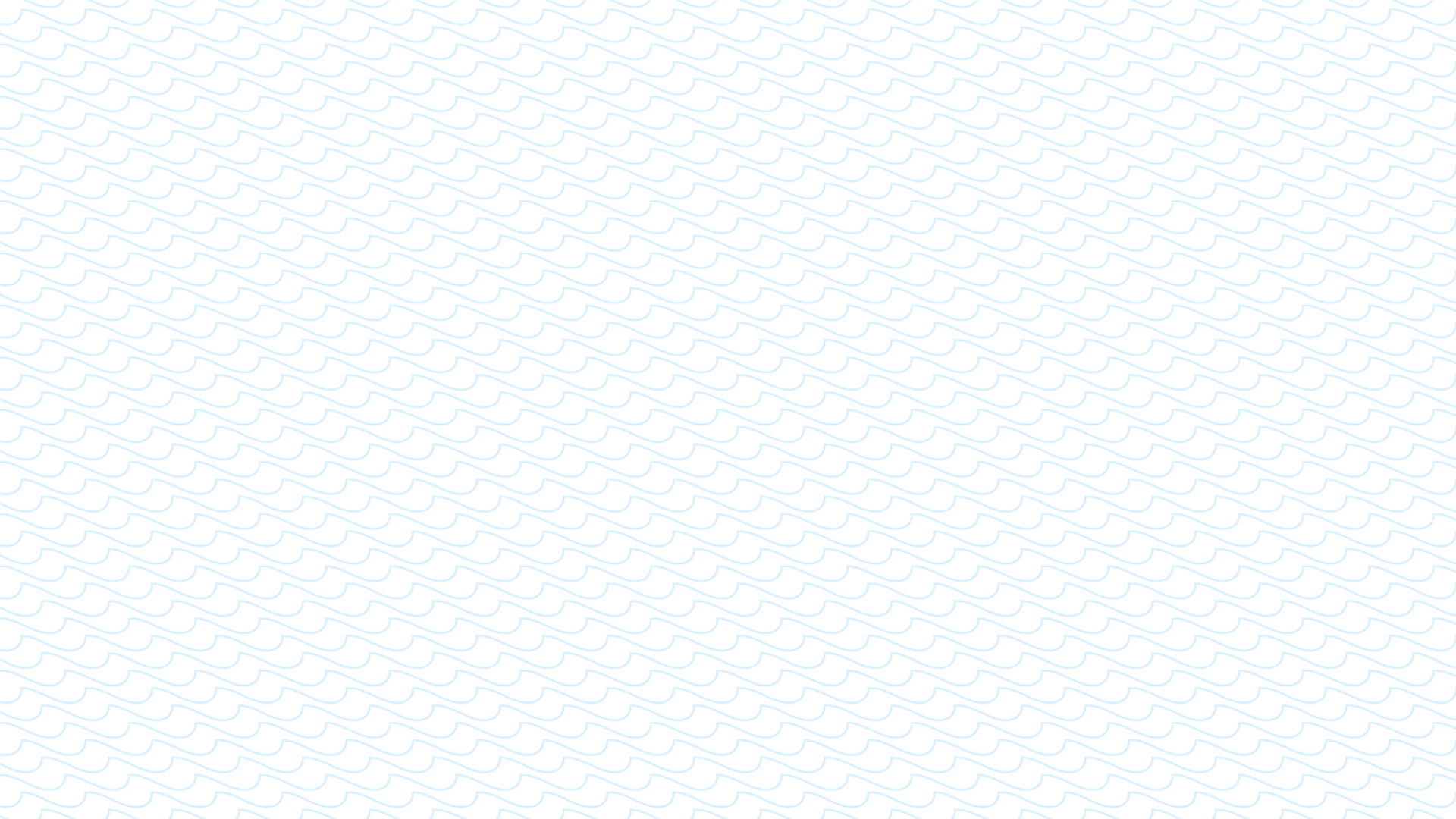
“My parents raised me calling me an ‘artist’, and I don't always call myself that.”
Where did you study design?
After my cousin suggested I take the design route as a career, I set off to Sophia Polytechnic for Foundation Art, which gave me an immensely productive and rigorous year, but I found the atmosphere stifling after an intoxicating, possibility-filled two years at St. Xavier's College. However, a particular faculty member remarked in the very first week that I should take up illustration, and encouraged by him, my focus turned to work. I left the college after my first year, despite making the cut for the second year, which was somewhat challenging to get through. I continued to Rachana Sansad, where I completed my B.F.A. in illustration. While these colleges gave me a great skill set, I wanted more in terms of thought process and conceptual understanding. So after two or three years of working, I set off to National Institute of Design for their post-graduate programme in graphic design. This is where I got my bearings and shed my shyness. Admittedly, I've gotten here pretty late, but I think that's what happens when you're carving your own career path and figuring out where you belong. It can take time.

Like the faculty member at Sophia Polytechnic who took an interest in your work and nudged you towards illustration, could you tell me about others who have acted as mentors for you?
I was very happy to have that encouragement in my first year and that teacher, Mr. Vijay Dhargalkar, was great at giving me that push. The first time he told me I was good at illustration was when he saw my live sketch of a fellow student—he said I had captured her expression well. I was taught for a year or two by a Filipino book illustrator and water colourist named Ernie Evangelista while I was in Riyadh, as a kid. (I stopped when he started teaching me graphic design as I lost interest, what irony.) In Mumbai, a Mr. Dickson was the local art teacher and he trained me for those government school art tests. A lot of faculty and senior designers from N.I.D. are very, very inspiring.
Other than that, I mostly did my own thing. I wish I was better at asking for help from authority figures and older people, but I'm not — maybe it's the generation gap. I would say that my husband, my close friends at N.I.D., and friends from school have been great at pushing me to do more. They've always been very supportive. They're the best.
Who among your peers do you look towards for inspiration?
There are many. Homegrown talent would be Aindri Chakraborty, Jasjyot Singh Hans, Sameer Kulavoor, and Lokesh Karekar. The latter two have really made a mark by being the first ones to create that niche of visual artist + illustrator work. They consistently balance commercial work and their own personal stuff, both equally appealing, in their own style. When it comes to illustrators outside India, I really like Olimpia Zagnoli, Steven Harrington, David O'Reilley, Ray Fenwick, Jacob Escobedo, McBess, and Alena Skarina.
What is it like being married to a fellow creative person?
Being married to Yorick is fun because we really get each other. We like to talk about work and give each other inputs, and when we take holidays, we want to see the same places and things. We rarely argue about what music to listen to. I think creatives are more open to trying new things and experimenting, so that keeps things exciting.

“I wish I was better at asking for help from authority figures and older people, but I’m not—maybe it’s the generation gap.”
You mentioned earlier that your parents have always thought of you as an artist and don't quite relate to the work you do as a designer. A lot of people often tend to group a bunch of skills together under the umbrella of ‘artist’. Would you like to talk about the difference between graphic design and illustration in general, and the different approaches you take towards both?
Graphic design and illustration can be at two different ends of the spectrum, and yet there are mixes of them, shades of grey. Take the design of an annual report compared to a matte painting—completely different. Editorial illustration lies somewhere in between. Graphic design has more to do with symbols and signs, simplification, parts to represent a whole. It is more logical, utilitarian, and technical. It is more abstract and deals with the correct representation and easy understanding of information. It is about imposing order. In other words, it's hardcore visual communication. Illustration, on the other hand, is more figurative and deals with the softer side of the way visuals are communicated. It lends itself more to an imaginative, descriptive brain, to details, the senses and emotions. It is meant to be enjoyed and felt rather than decoded. Viewers engage with both in different ways.
To do both, you kind of have to switch between these two opposite ways of thinking, which is challenging. I find that it's easier to take up graphic design projects, because they pay more and involve less of a learning curve. The execution is simpler as well—once you understand how to order information, it can be applied anywhere, and with the right typography, forms, and colour palette, can be performed in many, many ways.
With illustration, I find myself limited to the style that comes naturally to me. However, I'd say that I enjoy working on illustrations much more than graphic design, though I find that India is not very sold on the craft yet, associating it mostly with animation and storyboards.
Have you always worked freelance, or have you had full-time design jobs as well?
My first job was with Seventeen Magazine, for which I did page layouts, illustrations, and even wrote a few articles. My second job was at Yes Yes Why Not?, where I was heavily involved with advertising and design in the hospitality sector. My most recent office job was at Sony Music's Day 1 label, which had flexible timings. I worked on freelance projects on the side even when I had full-time jobs. It was only in 2013 that I started freelancing full-time.
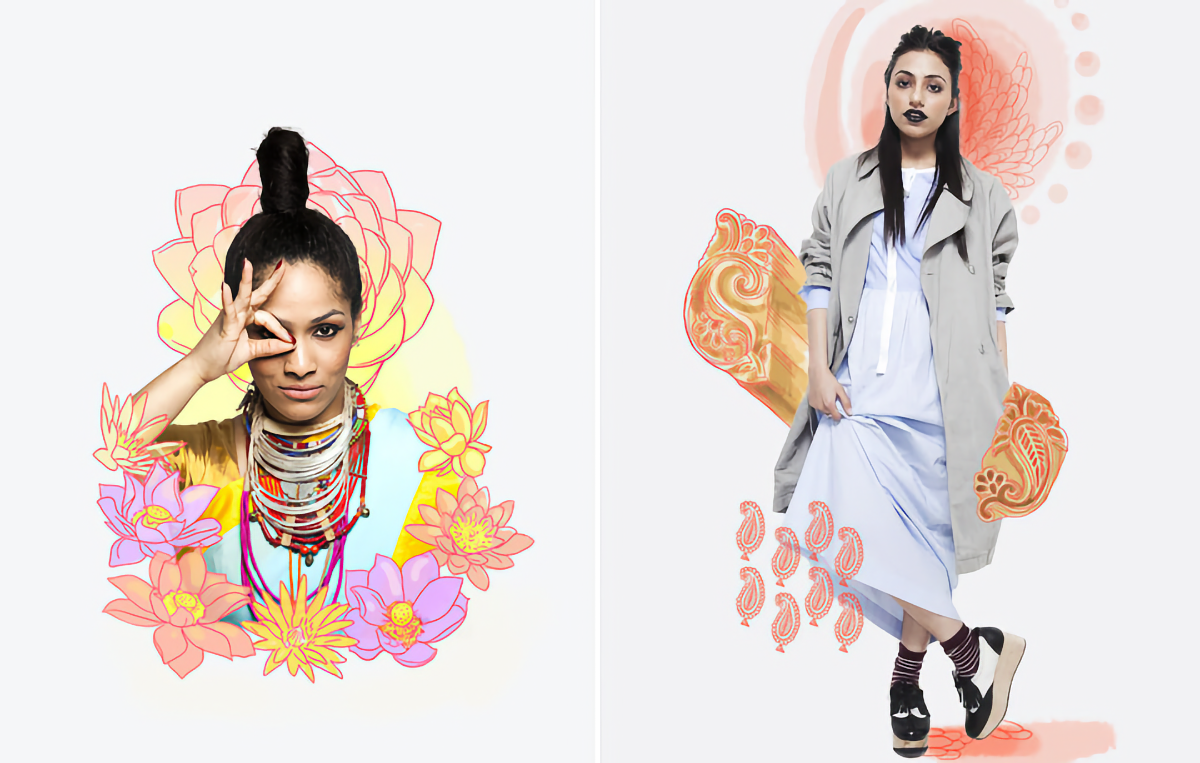
As a freelancer, how good are you with setting boundaries between client work and personal projects? Do you have separate physical workspaces for both?
Since I started freelancing full-time, I've found it hard to set time aside for personal work or even to get back into that zone, because I am busy attracting clients for bread-and-butter work. I work out of my home currently, and when I have a different office space nearby it should be easier to disconnect from 'the daily grind'. I have notebooks full of scribbles, which should all start getting fleshed out in the coming months, along with my website. Personal work is difficult because it doesn't guarantee you money, unless you visualise a great product and have an already established brand, the building of which takes time, effort, and commitment.
Are there certain rituals you follow when you work, both for client work and personal projects?
When I approach a graphic design project, there is a general order I tend to follow, but sometimes it depends on my comfort level with the client. I believe in checking my own style and ego at the door and really following what the client wants. Most clients, I've found, don't communicate their needs very well at the beginning. Rather than start work and turn them off with options that don't fit, I take my time to interview them, send out feelers, and see how they are received. I have a rigorous briefing process, usually a questionnaire, and if the person doesn't want to fill it out, I meet with them and discuss the project over several phone calls. Clients often don't understand that we can devise a million ways to tackle their problems and that they need to offer limits. 'Open' briefs literally make me shudder, and projects which involve them always seem to end with unhappy clients.
For my personal work, I try to use what I see around me and reinterpret it, give it new meaning. It always starts with sketching, though sometimes going at it on the computer first works. I dislike being limited by a grid while I'm sketching—polishing it up on the computer later is easy.
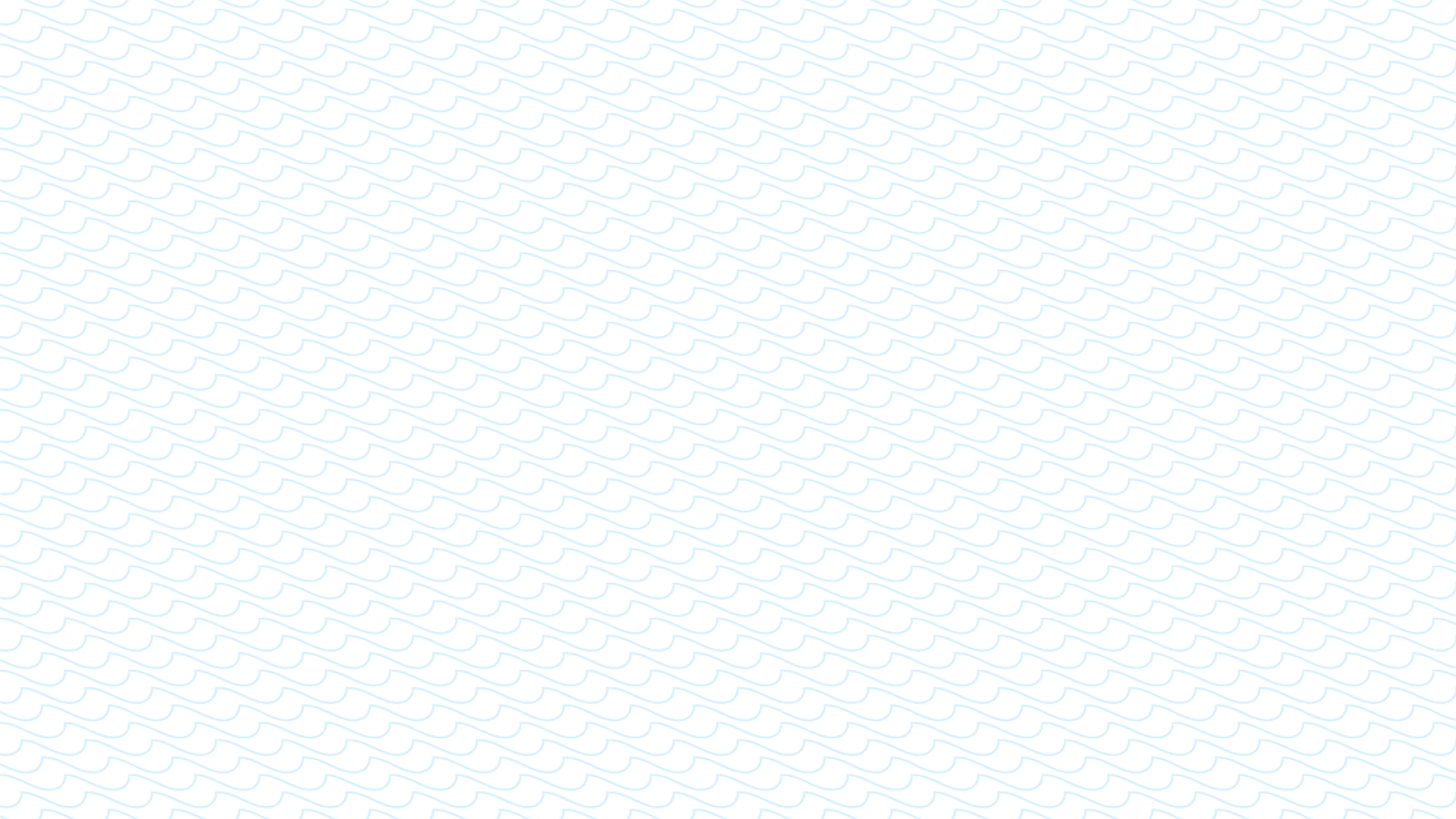
“‘Open’ briefs from clients literally make me shudder, and projects which involve them always seem to end with unhappy clients.”
If an aspiring illustrator/ designer asked you for advice, what is the one thing you would tell them not to do?
Two things: don't work for a client who degrades you and expects a low quality of work. This reduces you to a D.T.P. operator, pays a lot less, and undermines the whole profession. Don't be a software expert, be a designer. Also, do not work without a brief and a contract. It looks desperate and unprofessional, and is also a recipe for disaster—it leads to being taken for granted further down the line or not getting paid at all. Not getting a brief means that you will eventually have an unhappy client—how can you deliver what they want if they haven't communicated it to you in the first place?
Do you have a long-term vision or plan for yourself? Or do you sort of make it up as you go along?
Well, yes and no. I want to set up a small, independent studio, which won't be the kind that grows ruthlessly. My definition of success isn't having a big design house, but producing quality work. I want to focus on personal work that aims to be smart, witty, and culturally relevant. I also plan to take on more corporate work, especially projects that focus on the arts, like the heaps of work that I do for the music industry. I currently work with an amazing N.G.O. and want to do more of that.
I want to write and comment on media, our perceptions of it, and especially about how women are perceived in the media (along with other gender issues) from a design perspective. The order of these varies as and when opportunities arise, and that's what I make up as I go along.
The Setup / Mira Malhotra

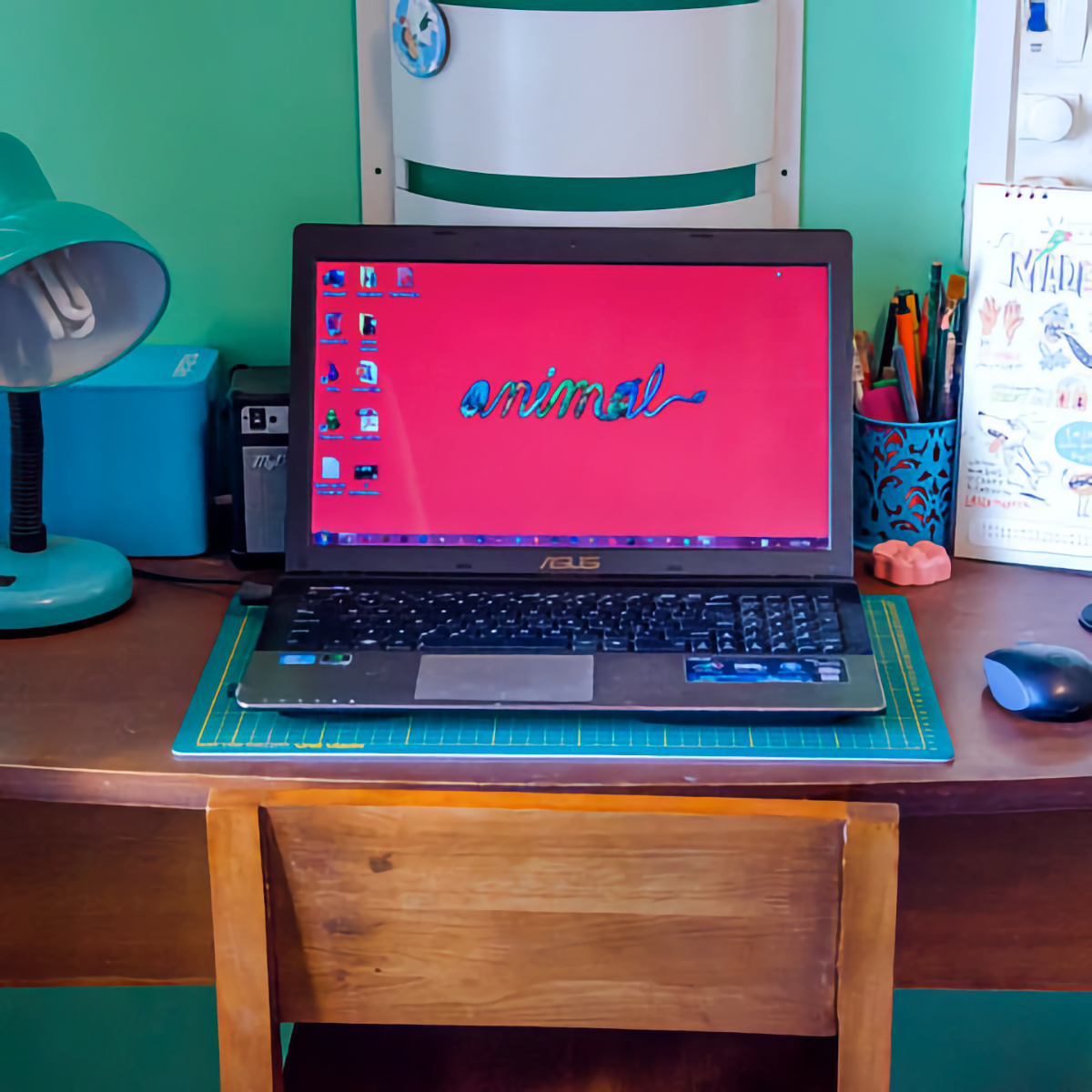
Mira's workspace. She prefers not to use Apple products.
"I don't use Apple products. Surprise, surprise. I find Apple's methods of engaging their customers dictatorial, controlling, and divisive. That does not mean that I love Windows and Microsoft products. However, they do offer some control and I love to do things myself. I am really slow when I use a Mac despite two to three years of hardcore work experience on it. I actually find it limiting and not very user-friendly. I use a 64-bit Asus laptop which performs adequately. Before this, I used a great Mike Ming Art Edition Dell laptop."
"For photography, I use a basic Nikon D5100 camera with some retro lenses from my dad, a 17-105mm zoom lens, and a 50mm 1.4 fixed lens. Nikon lenses conform to a standard that has existed for years, so they're really very accessible and convenient, and fit on several models, which means they have better resale value too. I also have a remote control for my camera and a Sony tripod."
"I use Adobe software: primarily Illustrator, InDesign, and Photoshop. I used to love Corel Painter, but I can't afford it."
"I have a handy 0.5mm 2B pencil, which I love to draw with. A new bunch of Posca paint markers is currently on its way to me. I like brush pens a lot for free-er, messier drawings, and Uniball 'Eye' colour pens for precision linework—these are really good for building lines of different widths. For making print dummies I have a steel 18-inch ruler, giant set squares, a protractor, and these really cool made-in-China 'MornSun' craft supplies: a cutting mat, a rotary cutter (it cuts circles), and a special cutter for perforation, creasing, straight cuts, and zig zag cuts. I also work closely with my printer on screen printing jobs."


